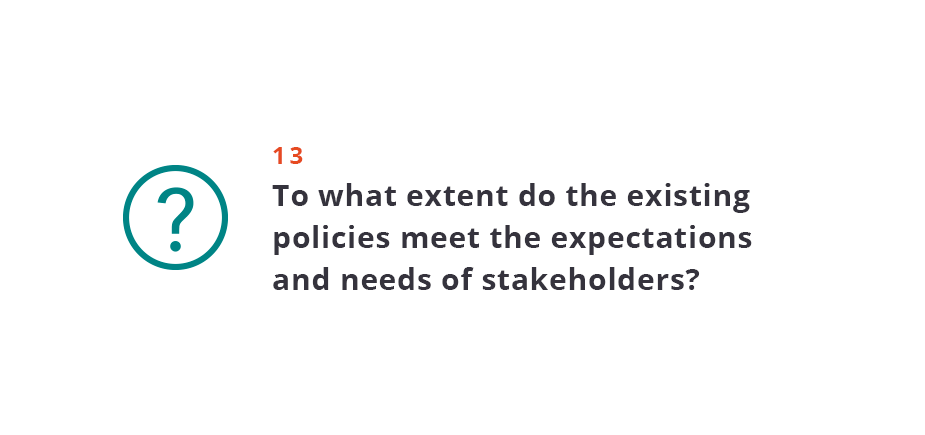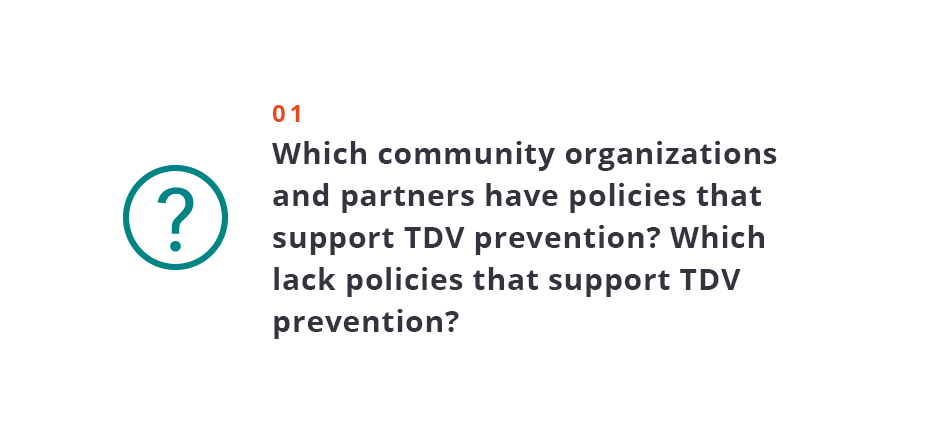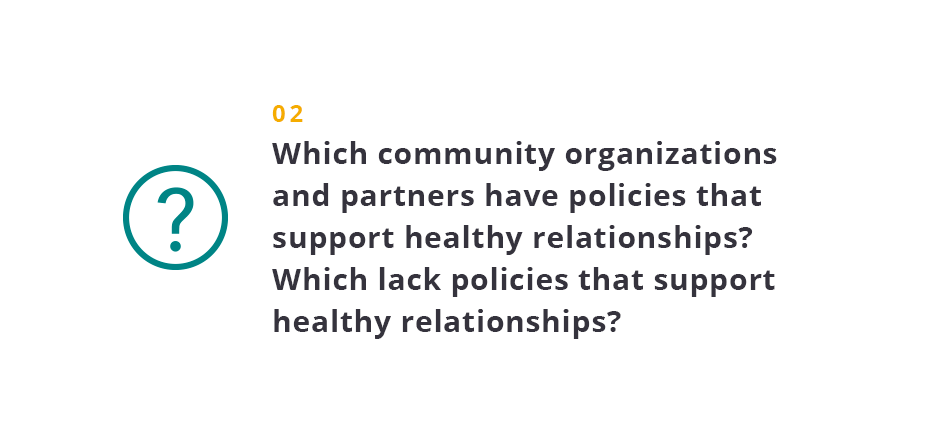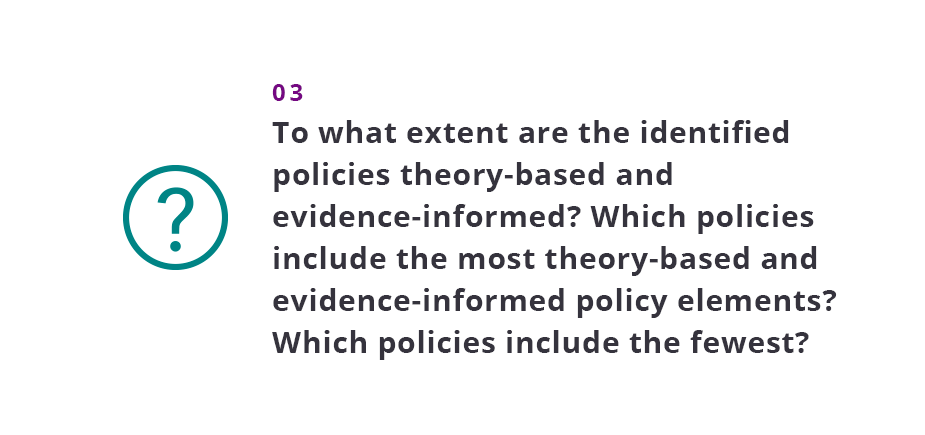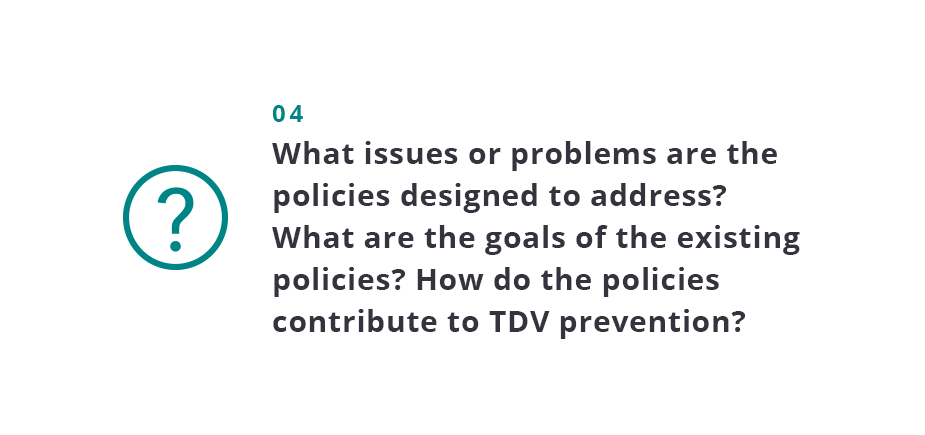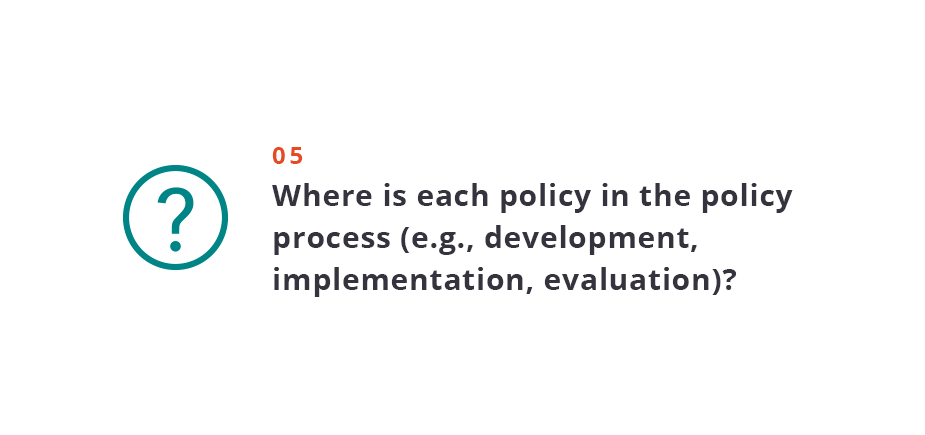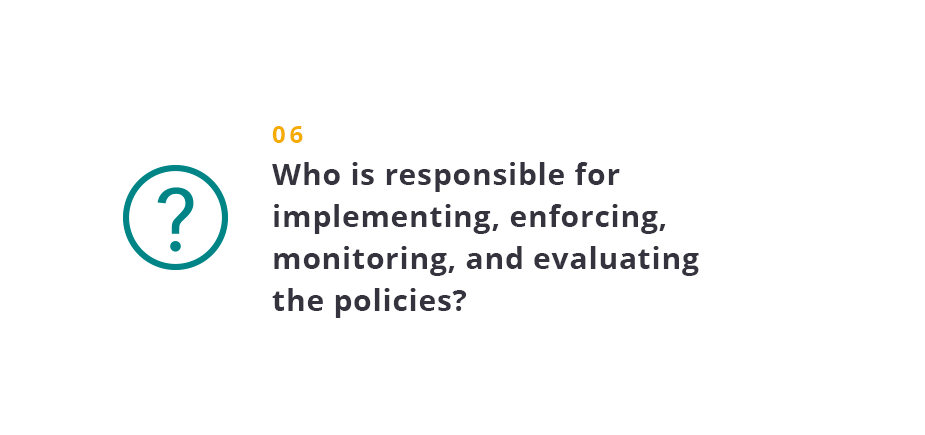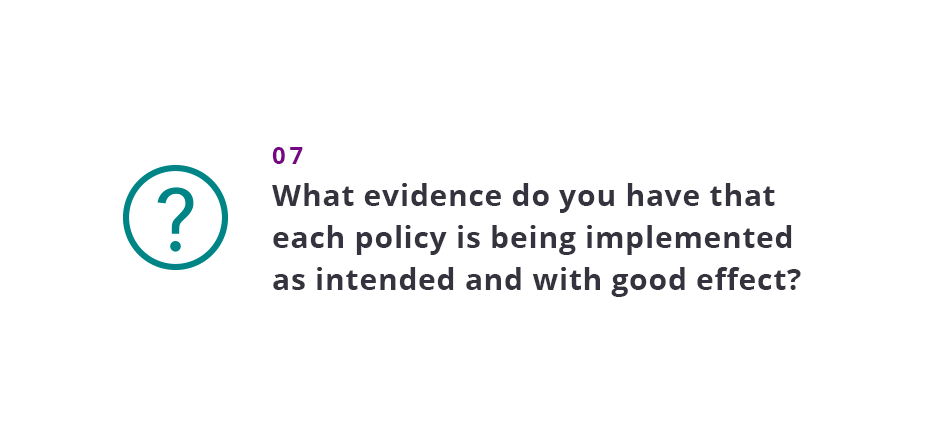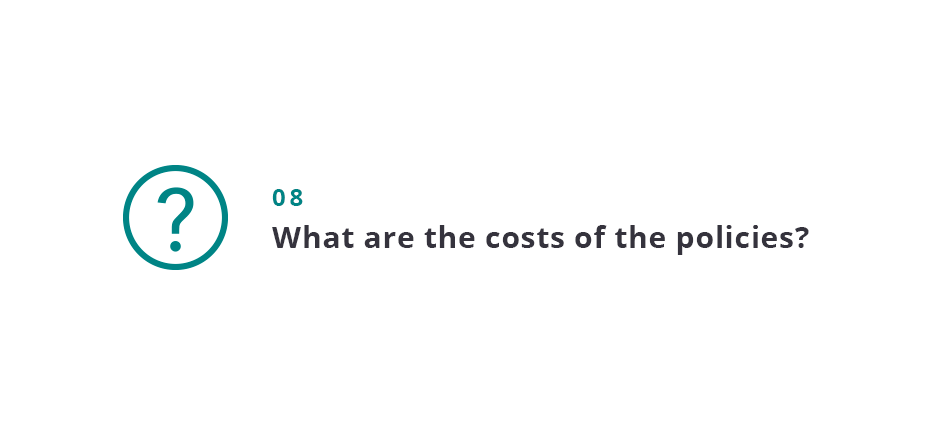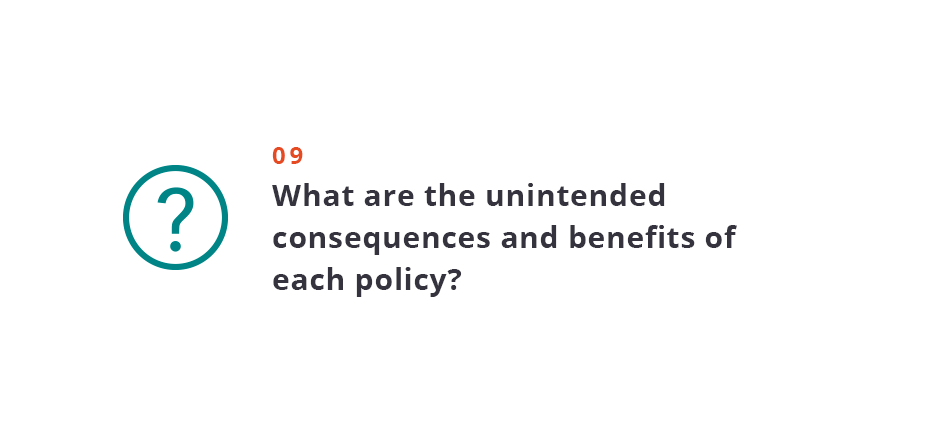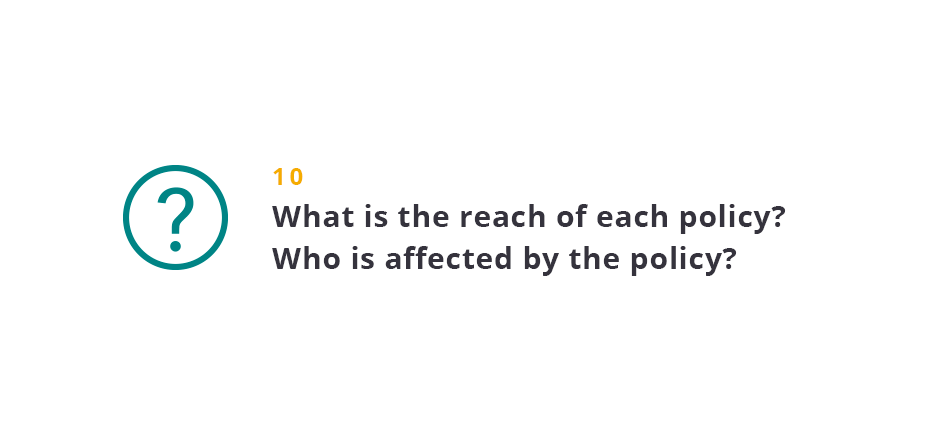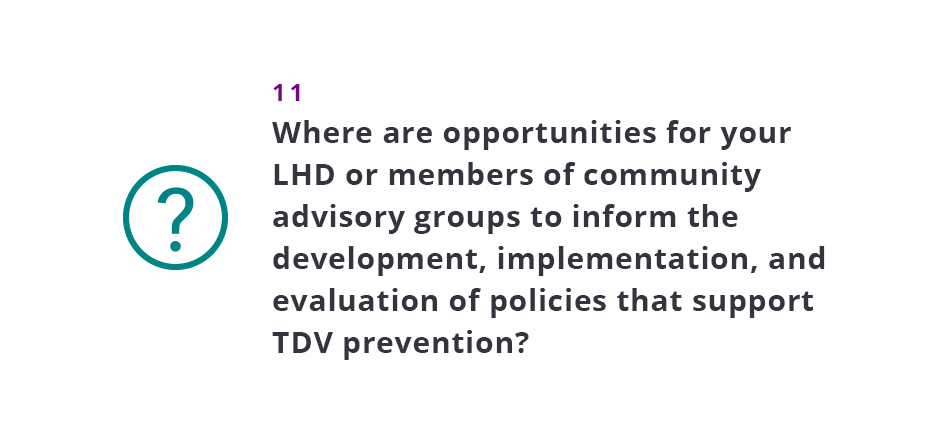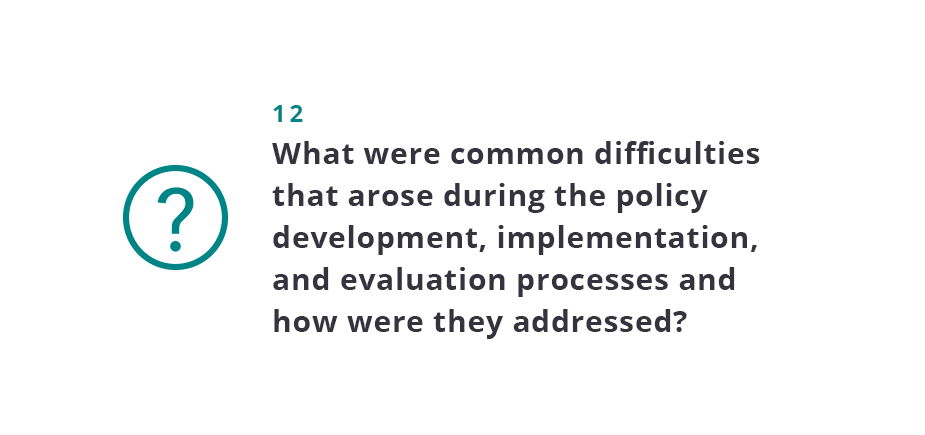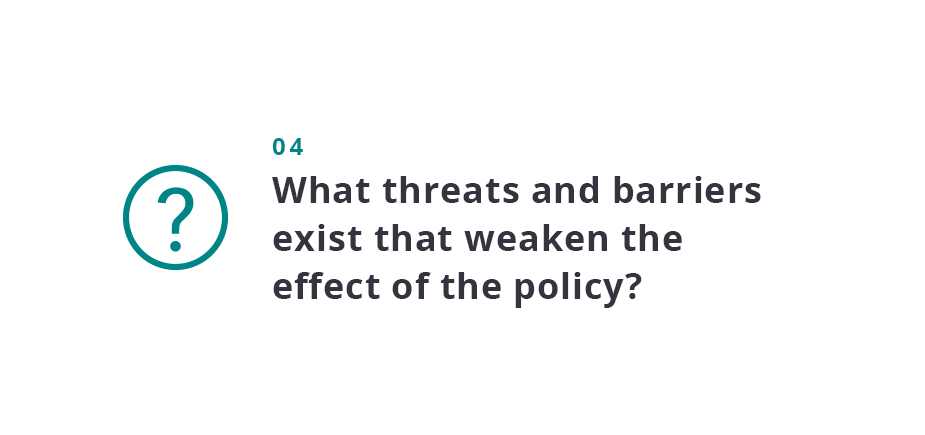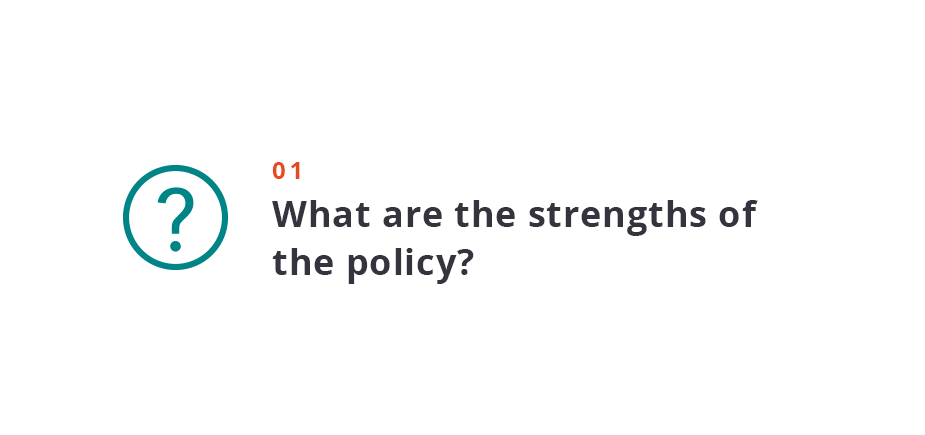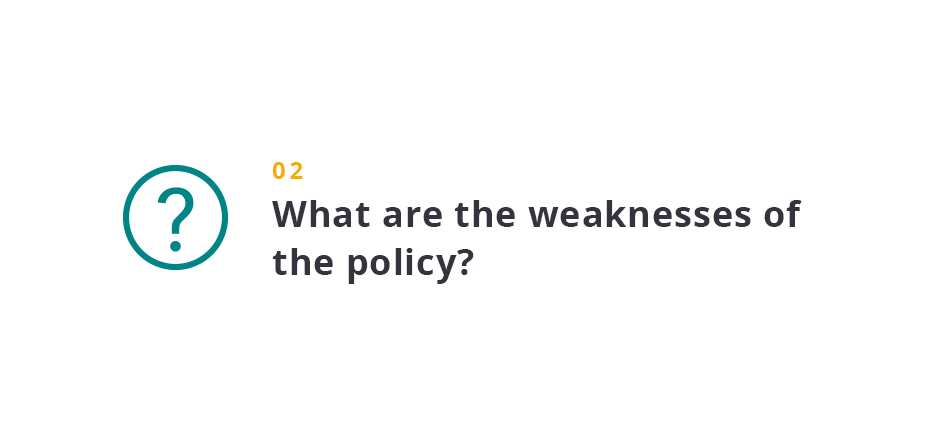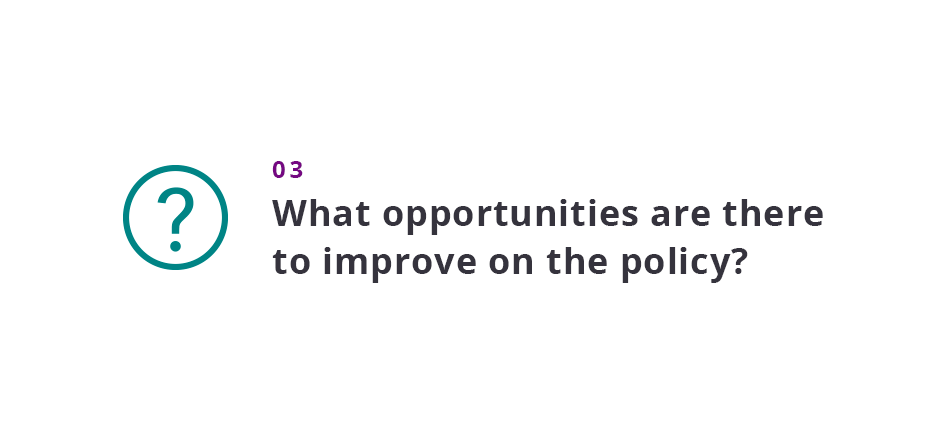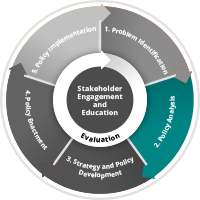
Policy Analysis
Policy analysis is the process by which you determine the strength, comprehensiveness, and reach of policies. There are a number of considerations to take into account when analyzing policy.
CONDUCT AN ANNUAL POLICY INVENTORY
An important first step in the policy analysis process is to conduct a scan of existing federal, state, local public and organizational policies related to TDV prevention, determine the extent to which the policies include theory-based and evidence-informed policy elements, and track how the policies are translated into practice.
Identify and inventory any existing or proposed organizational, state-level, and local-level public policy specifically aimed at addressing TDV. Consider identifying and inventorying policies intended to address complementary issues (e.g., mental health, bullying, harassment, youth violence, substance use, sexual health, relationship quality, friendship quality, family quality, parenting styles/quality).
Download Printable PDF of Slider Questions
The Policy Inventory Partner Questionnaire is a helpful tool that can be distributed to community organizations to help screen for relevant policies. The form collects contact information and includes eight questions about the scope of the identified policy. See below other sources that might be helpful in identifying existing or proposed organizational, state, or local public policies that apply to TDV prevention.
DownloadThe next step is to enter all identified policies into the Policy Tracking Spreadsheet. The spreadsheet collects basic data for fifteen variables related to policy origin, scope, and status. Each policy will be given a unique identifier.
DownloadNext, a Policy Inventory worksheet can help you determine the extent to which each identified policy contains specific theory-based and evidence-informed elements. The worksheet includes multiple choice questions with limited response options (yes, no, don’t know, not applicable) and optional free-response questions about the policymaking and implementation process. As answers are selected, an in-page synthesis grid is automatically populated to identify gaps.
DownloadFinally, the Annual Policy Inventory Synthesis Grid provides a summary of the gaps across all identified policies. Information from each inventory worksheet synthesis grid is transferred to a single synthesis grid. The following provides additional questions that might be helpful as you analyze the findings of your annual policy inventory to determine the strengths and weaknesses of existing policies.
Download
A SWOT (strengths, weaknesses, opportunities, threats) analysis may also prove helpful in objectively analyzing individual policies. Consider the following questions and discuss them with your community advisory board:”
Download Printable PDF of Slider Questions
This Guide and website are provided for informational purposes only. Note that certain restrictions apply to the use of CDC funds for impermissible lobbying. For more information concerning such restrictions see the CDC Anti-Lobbying Guidelines.


